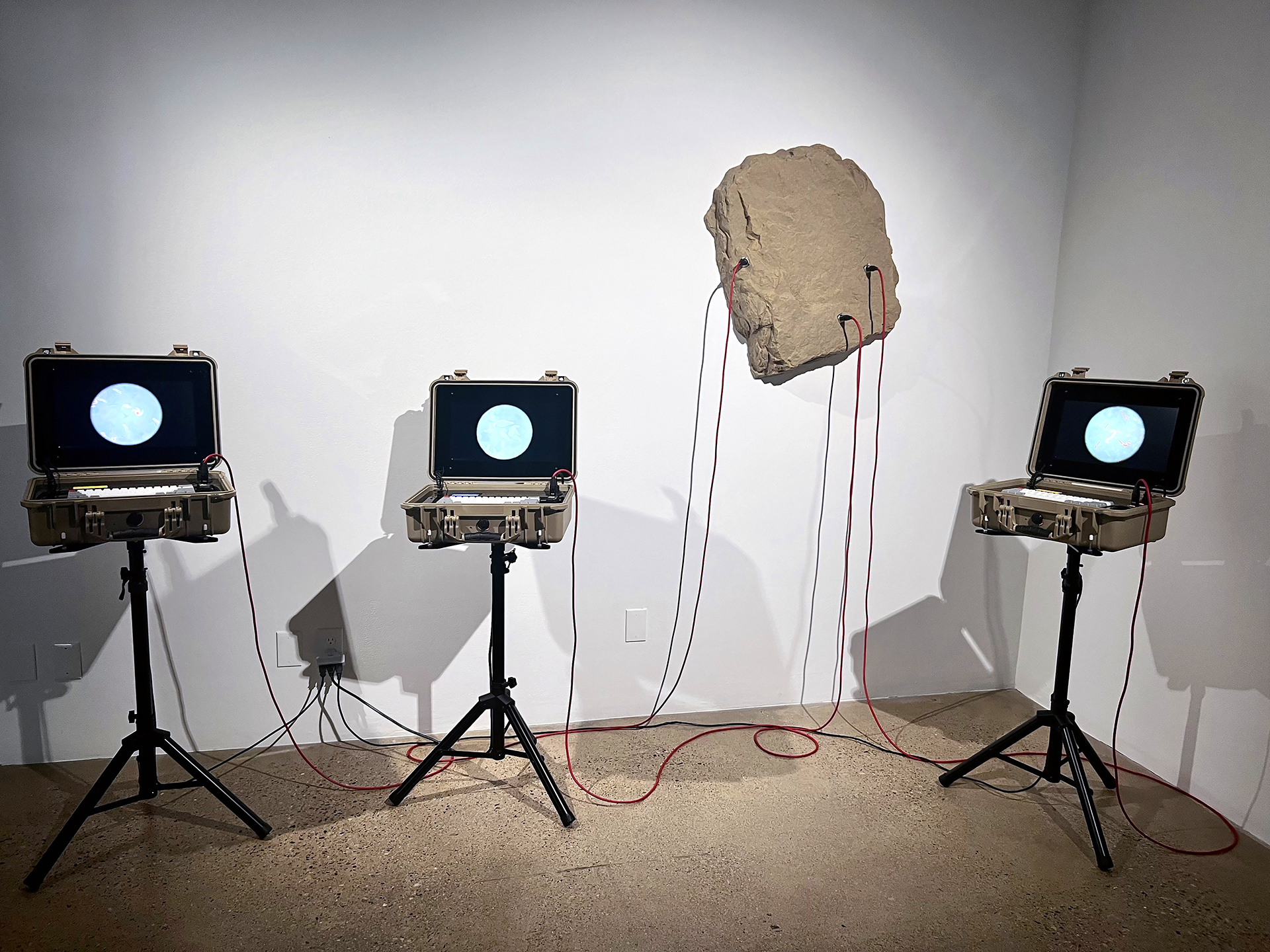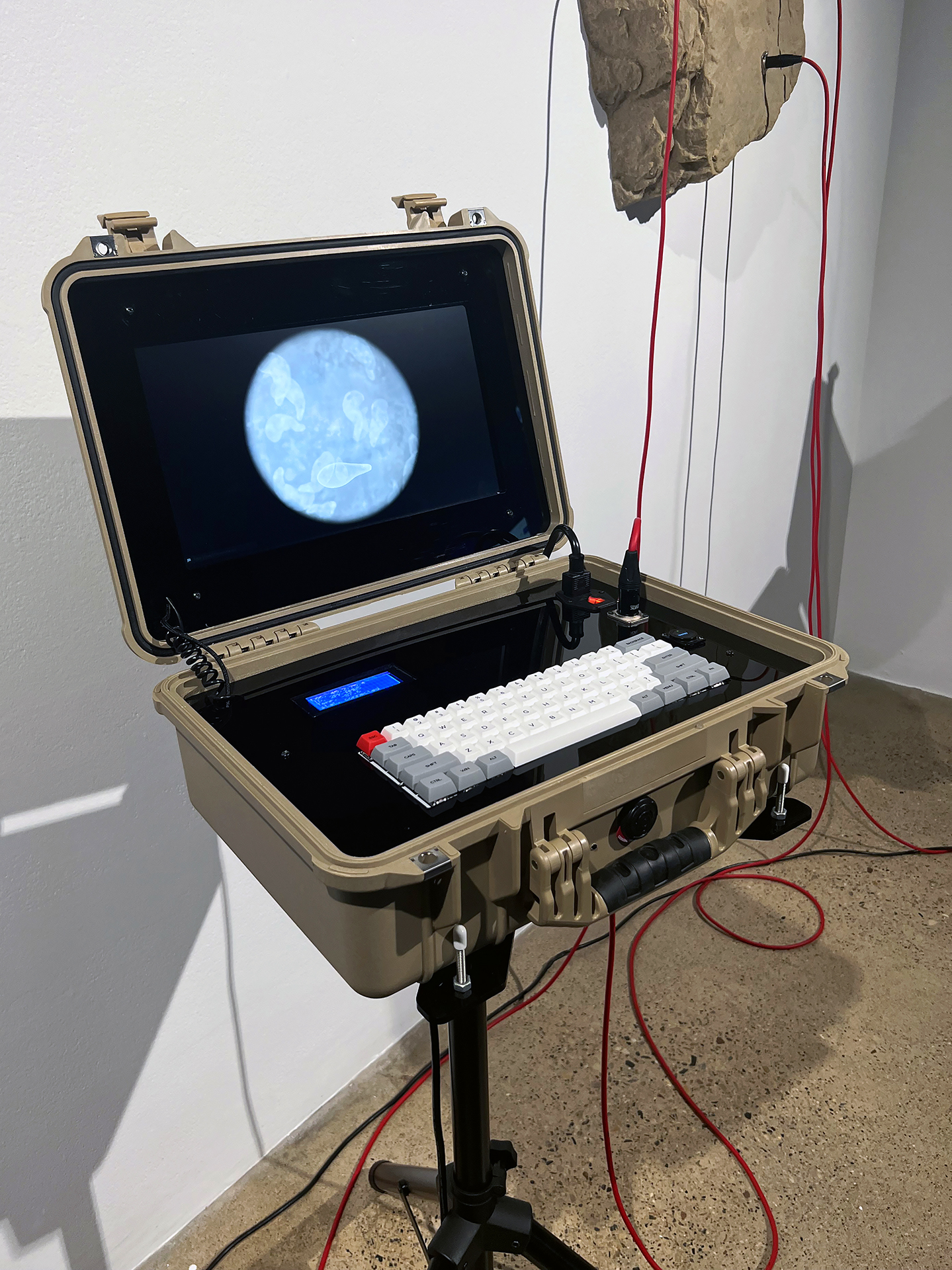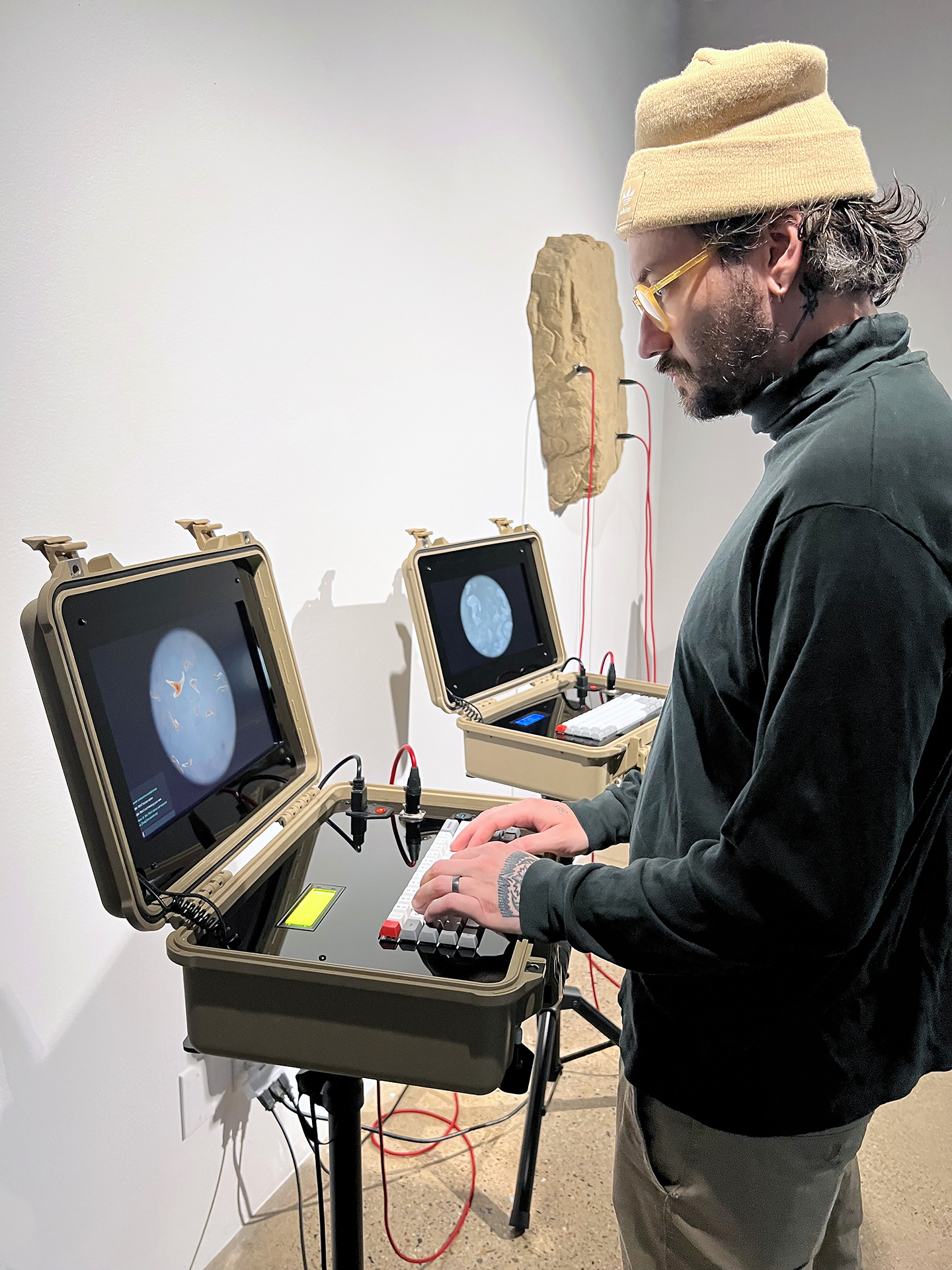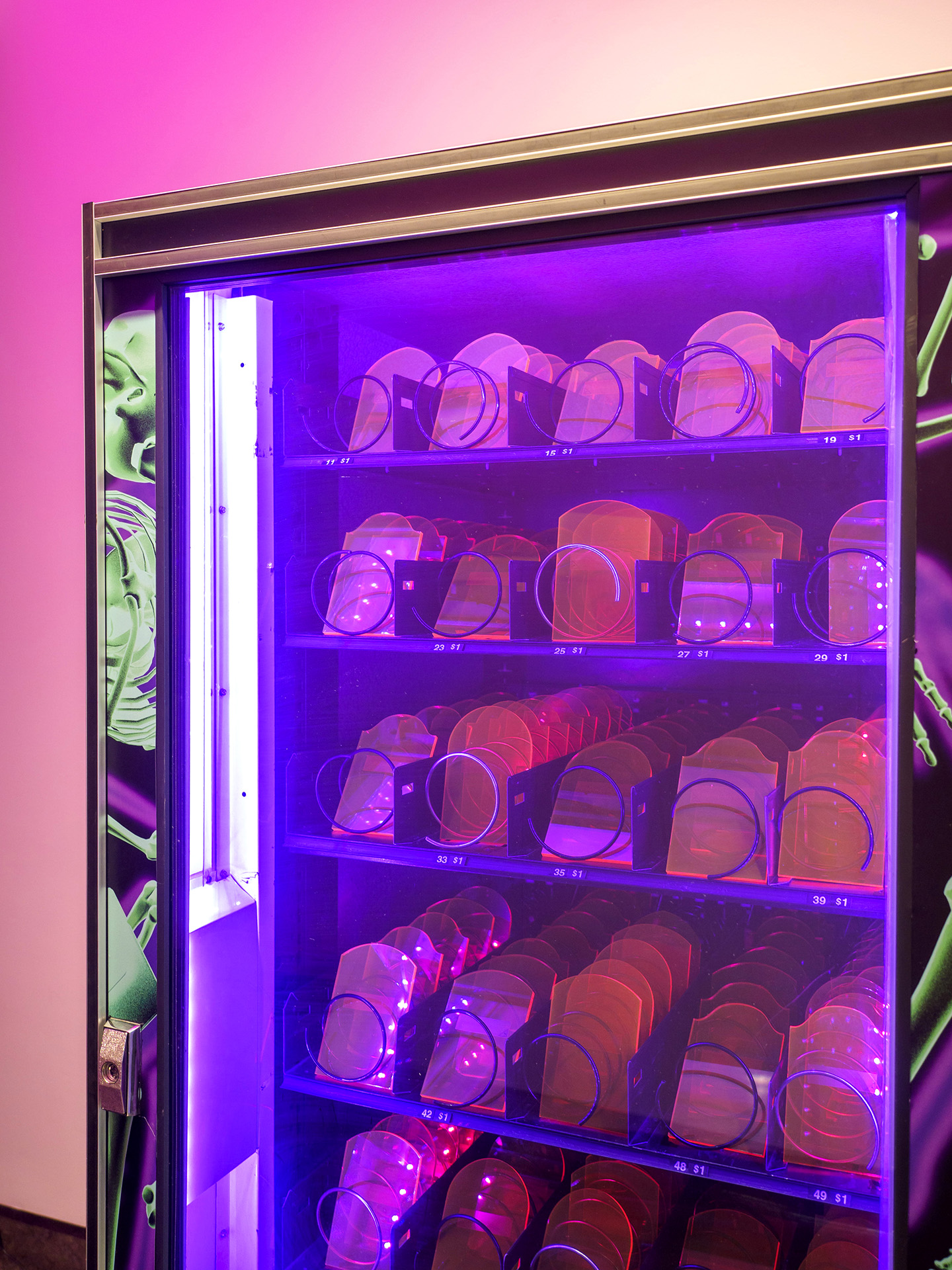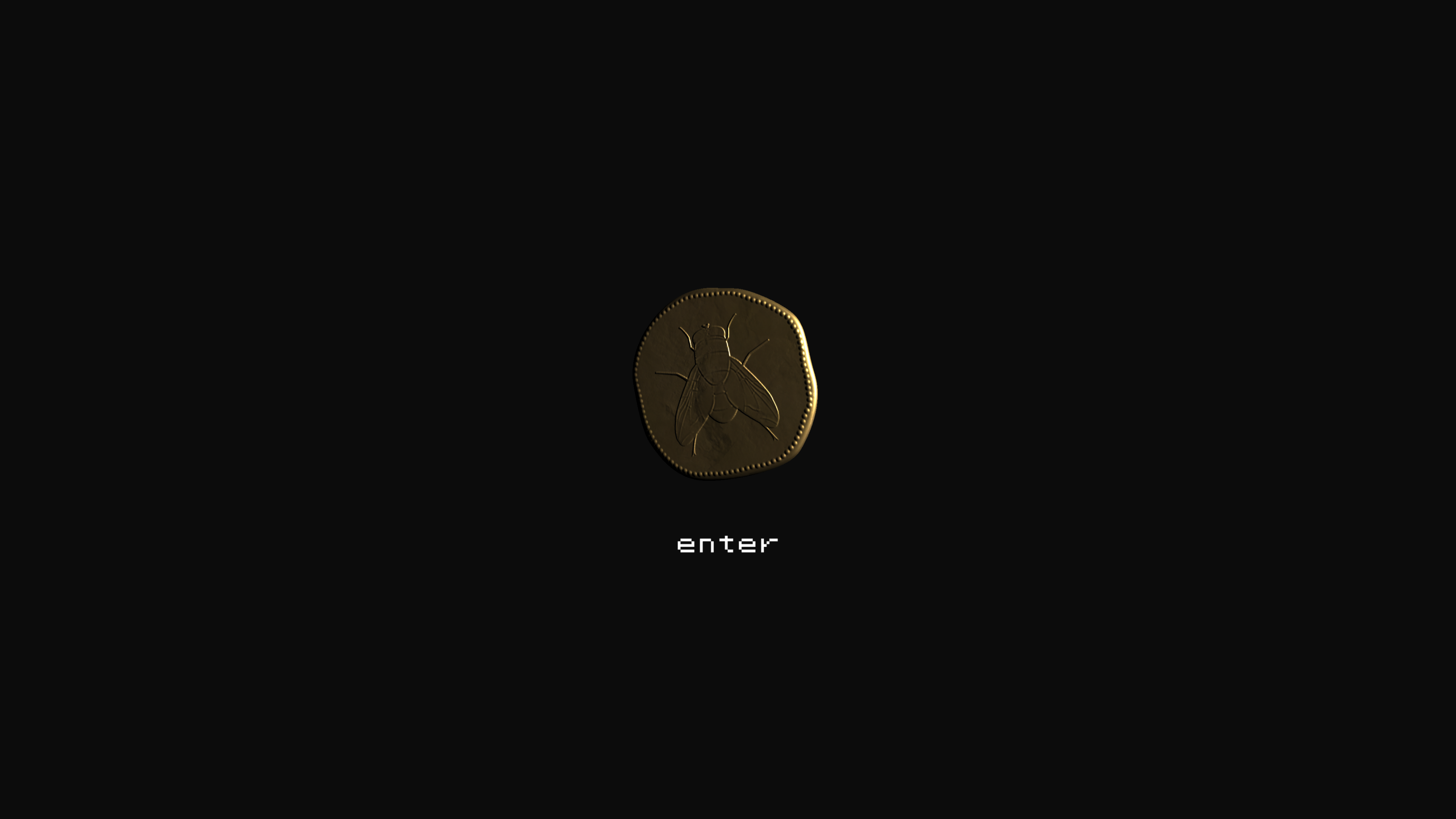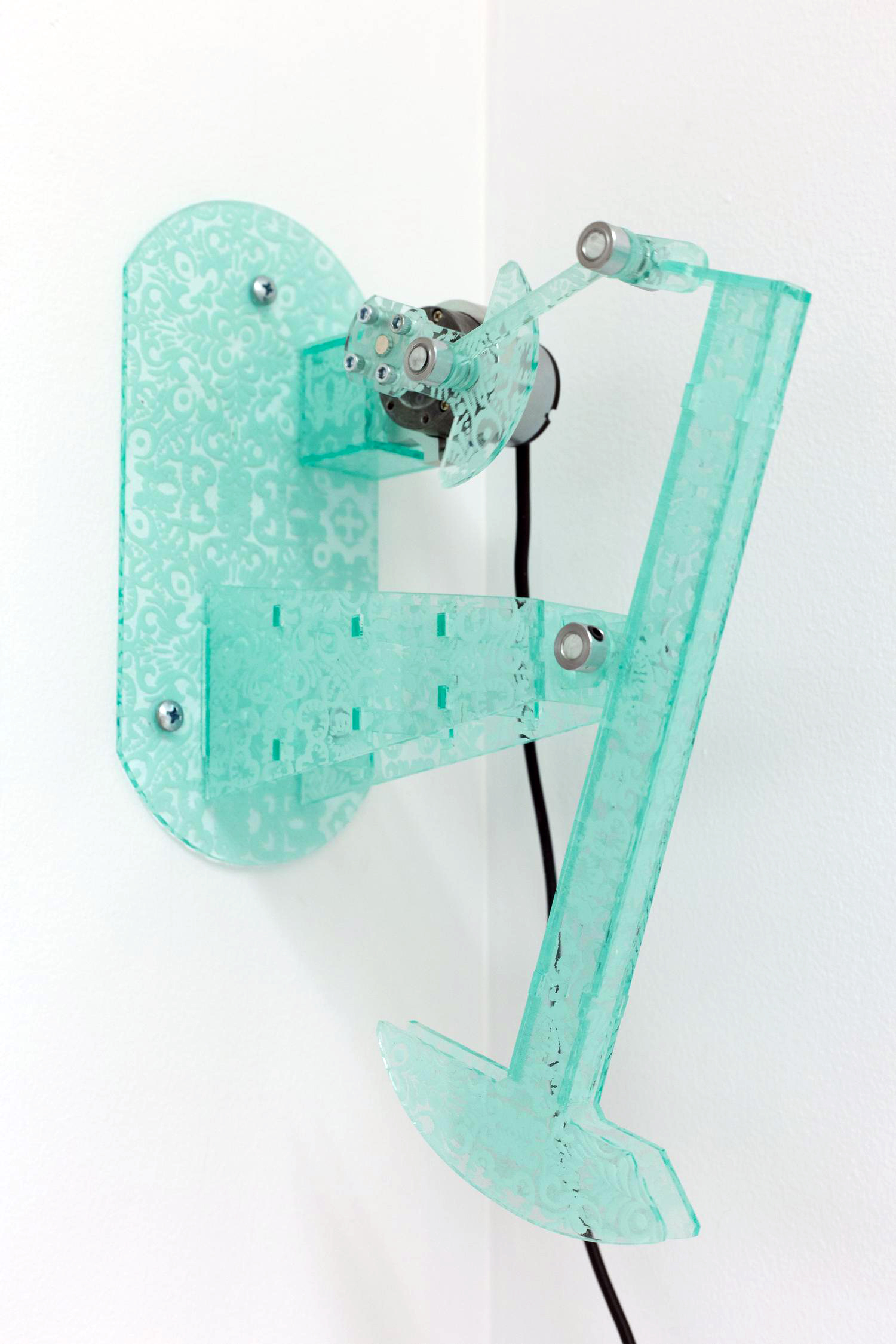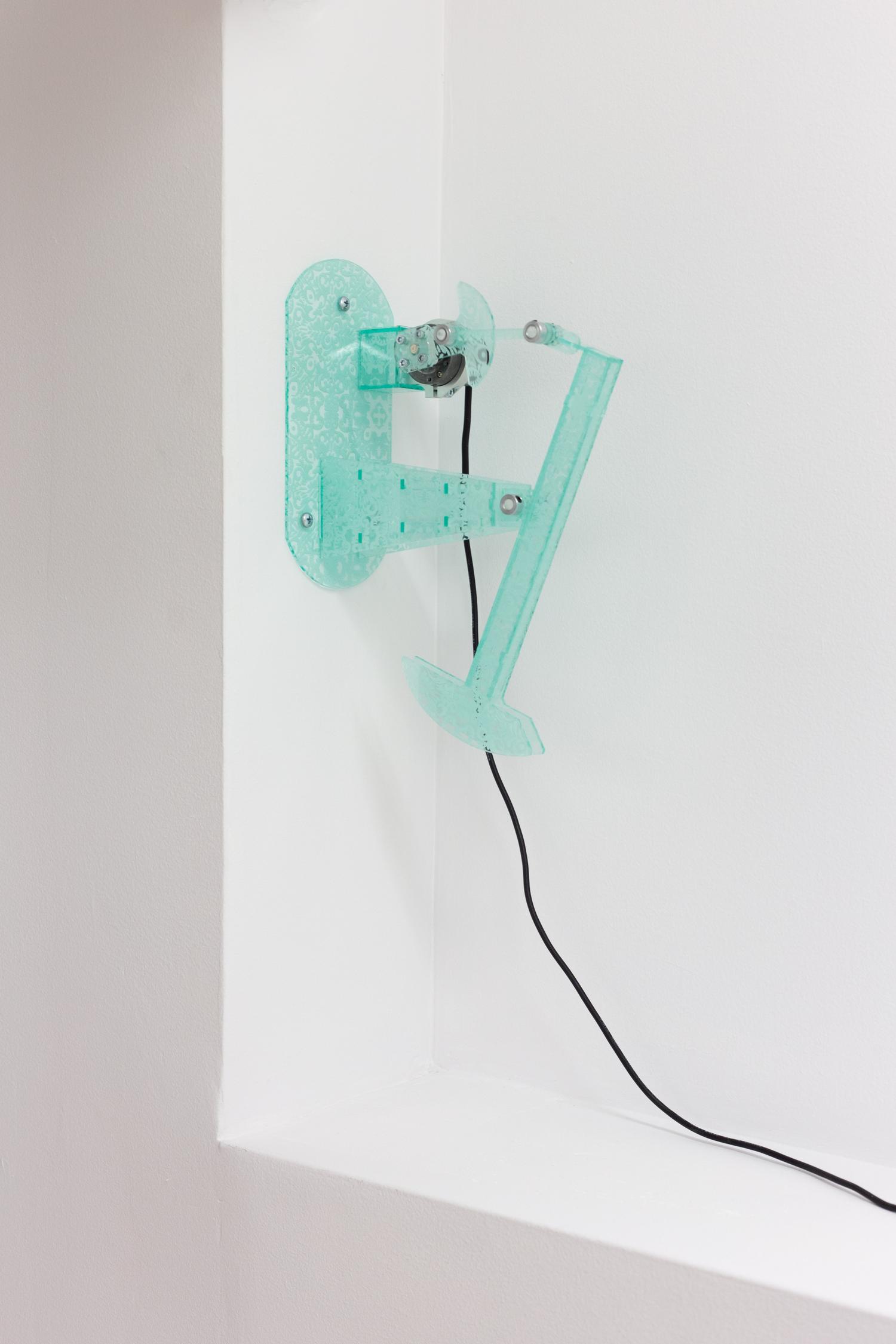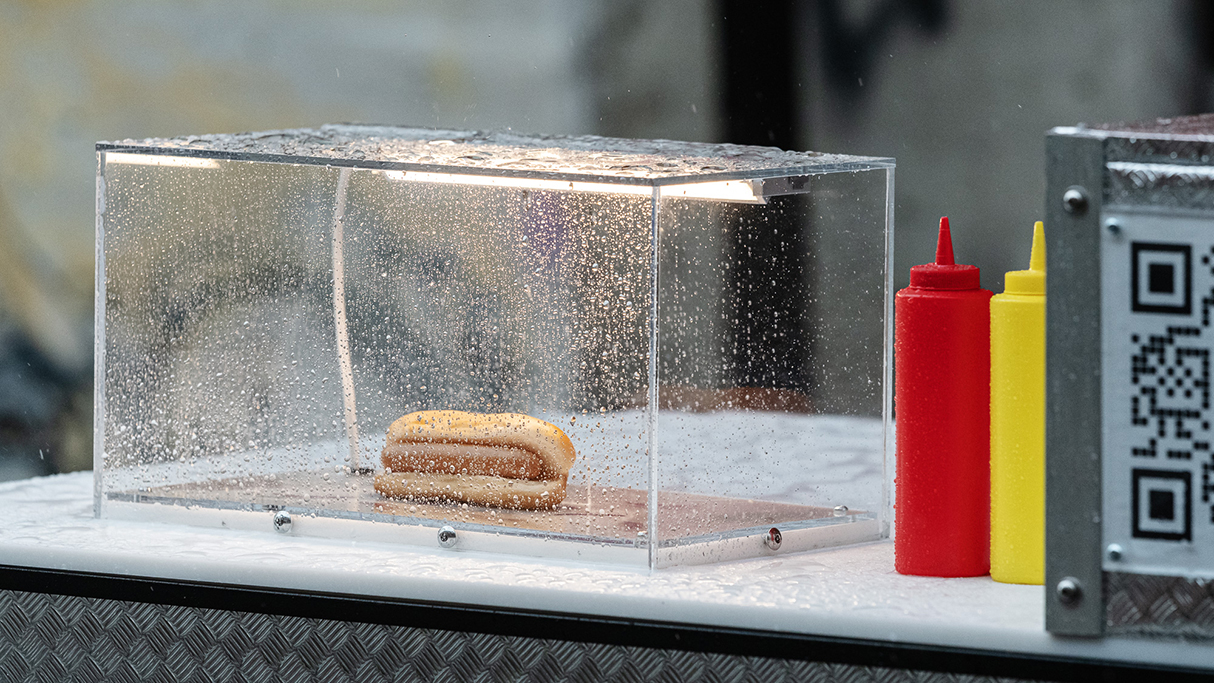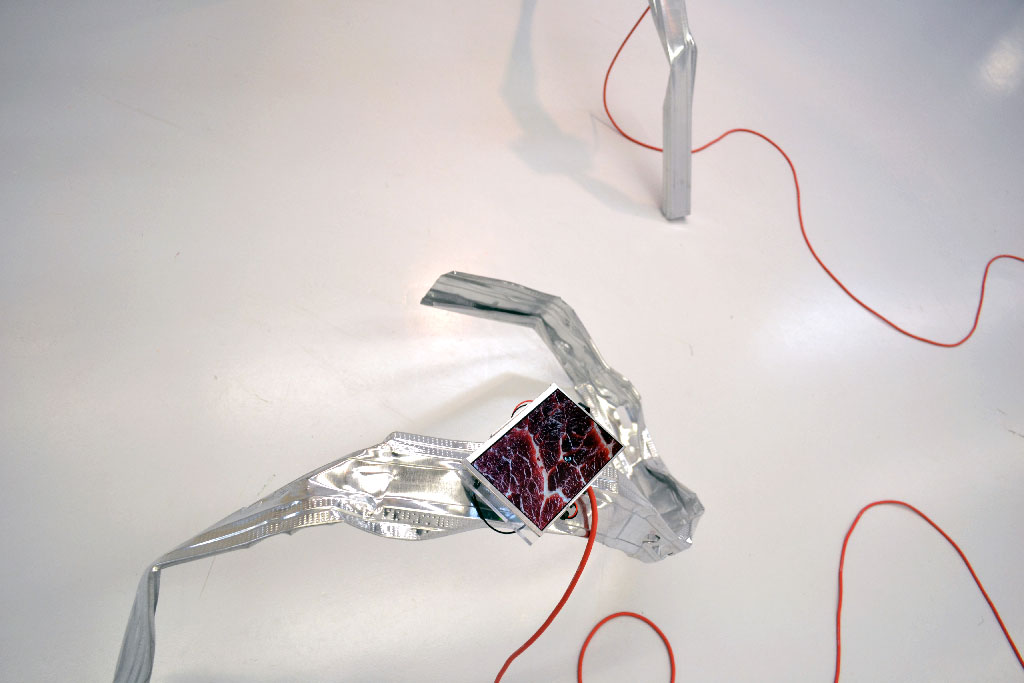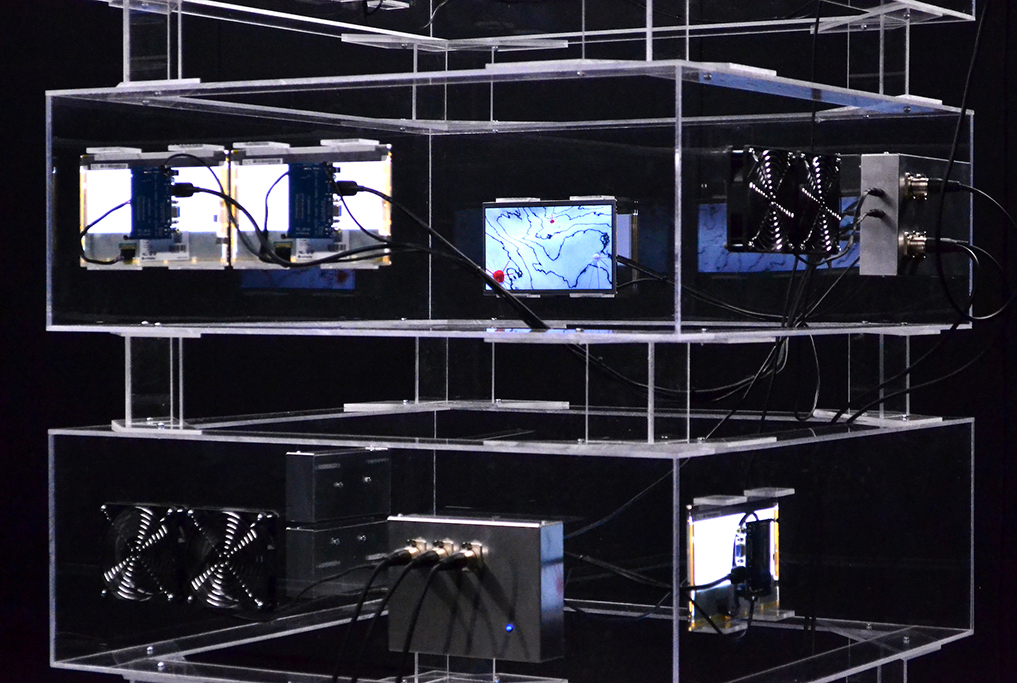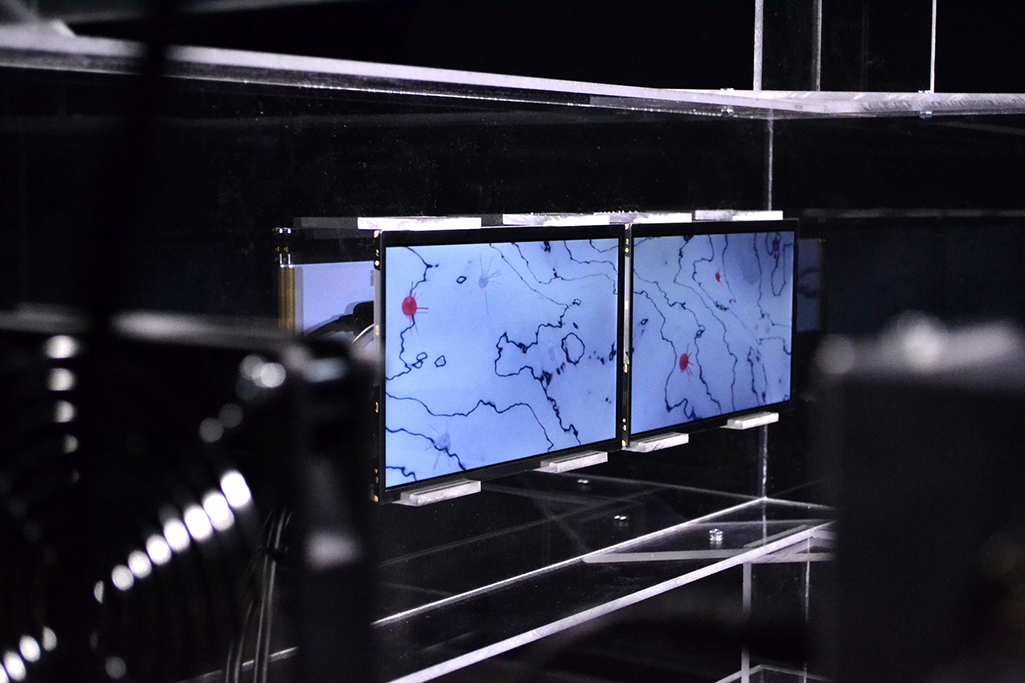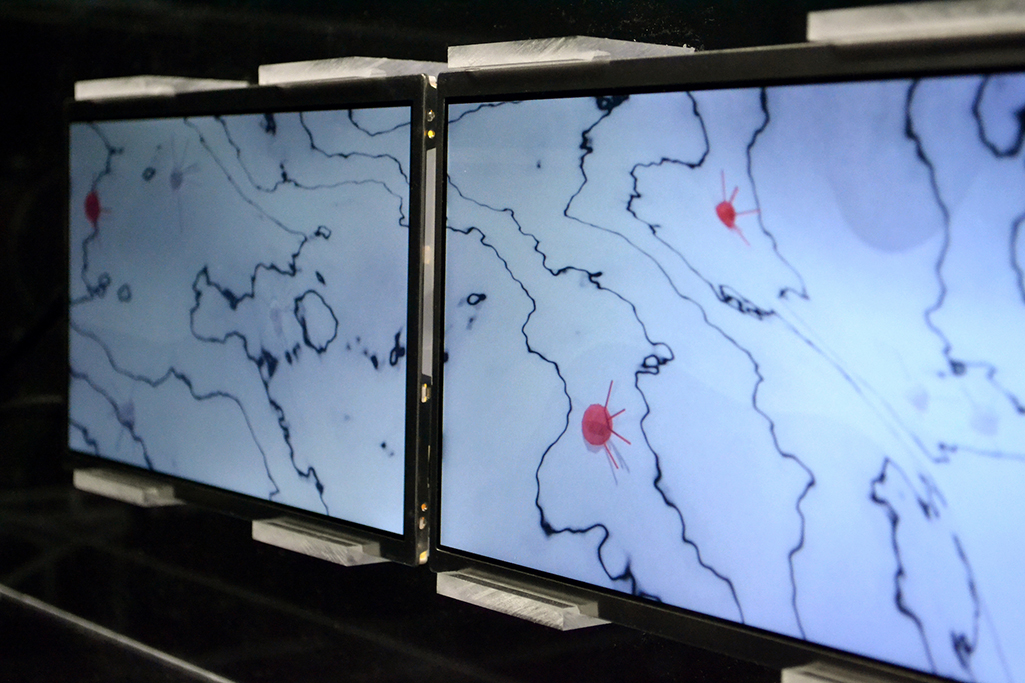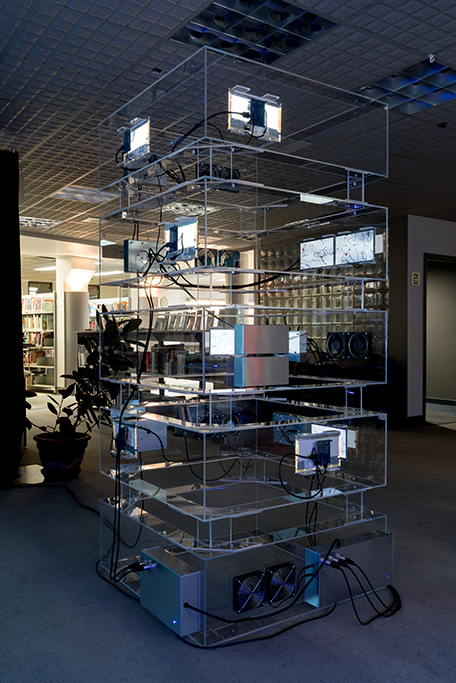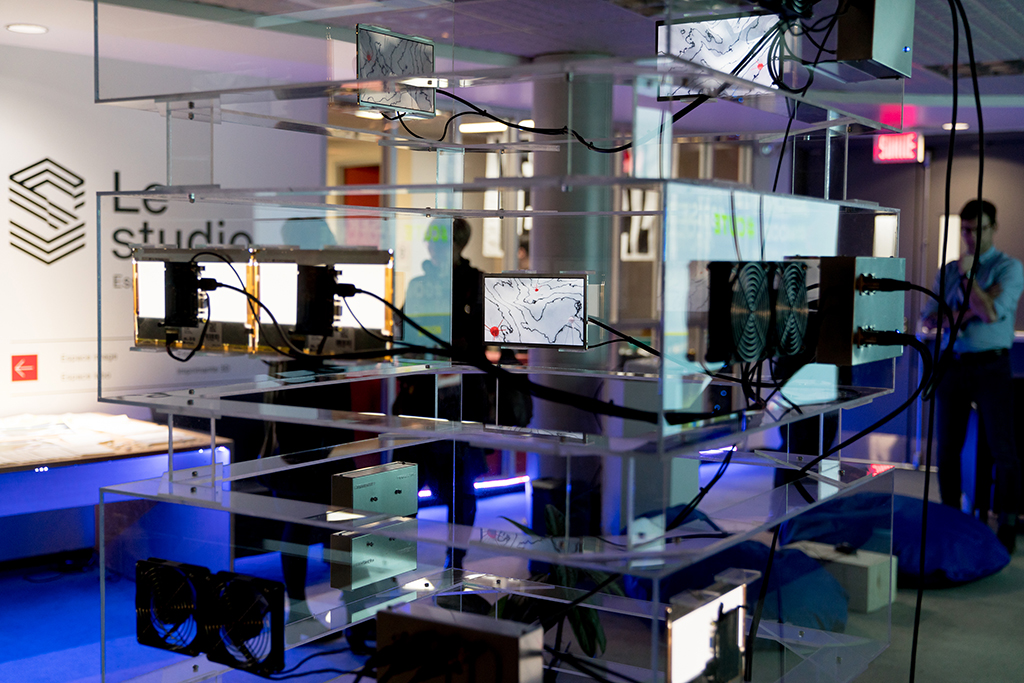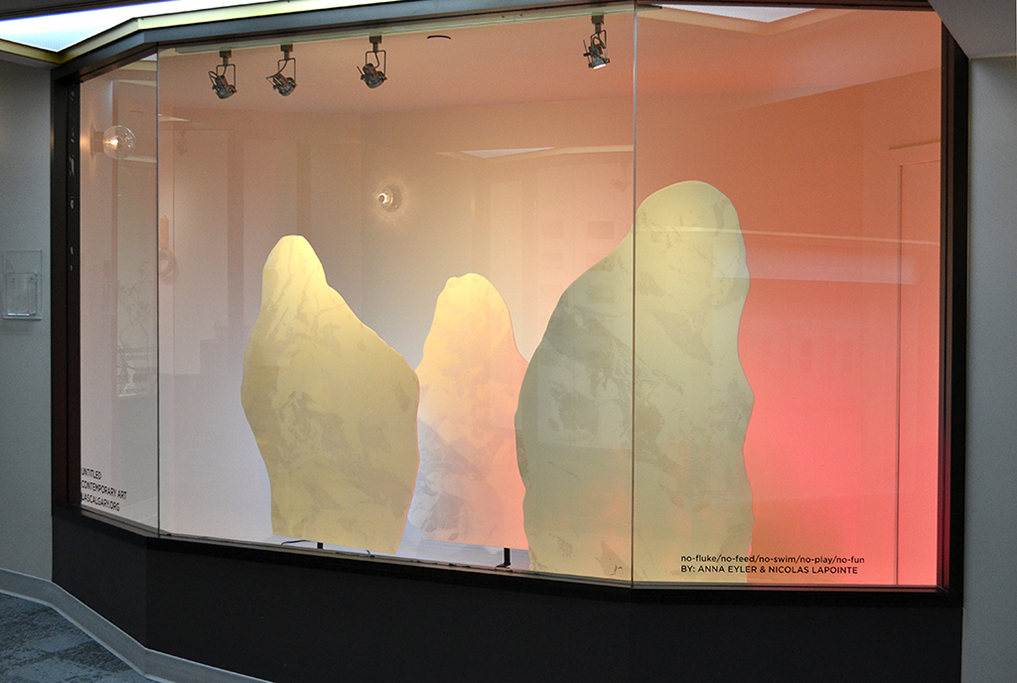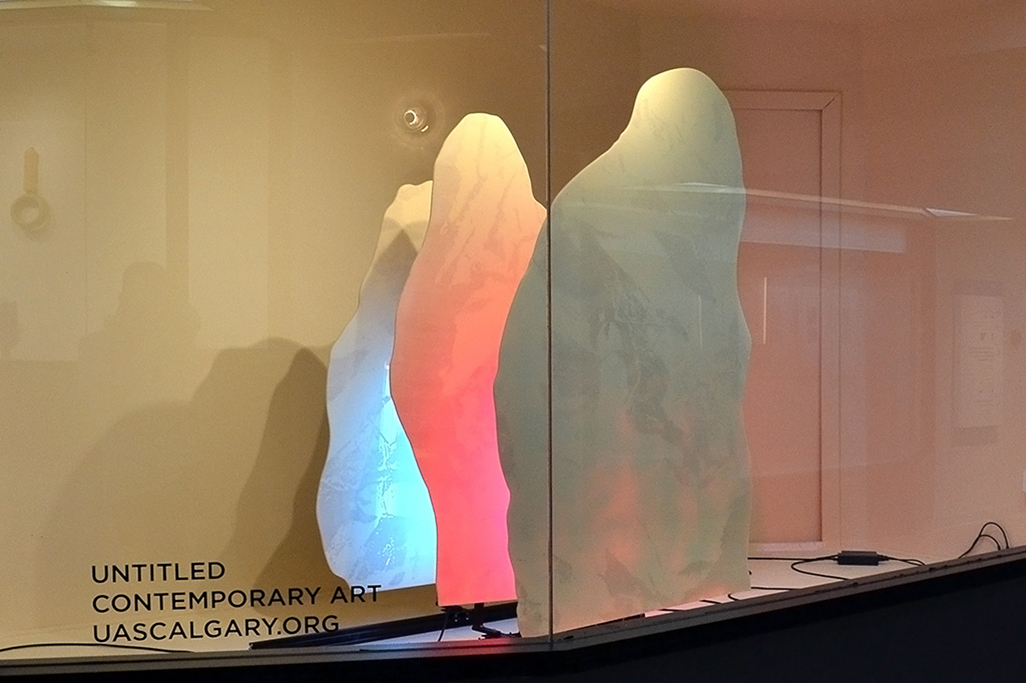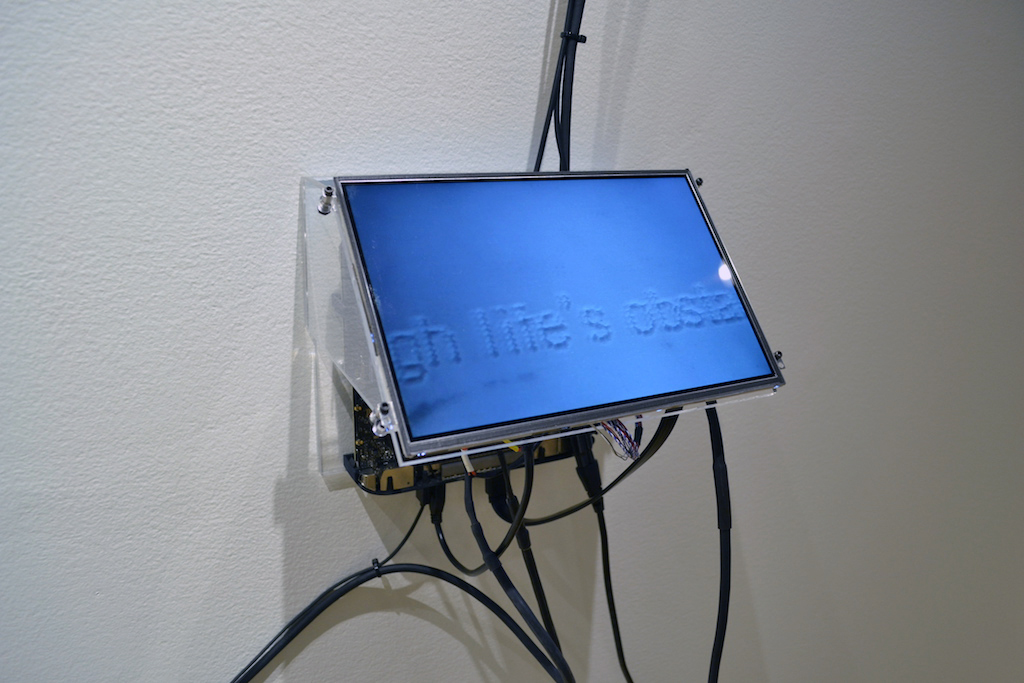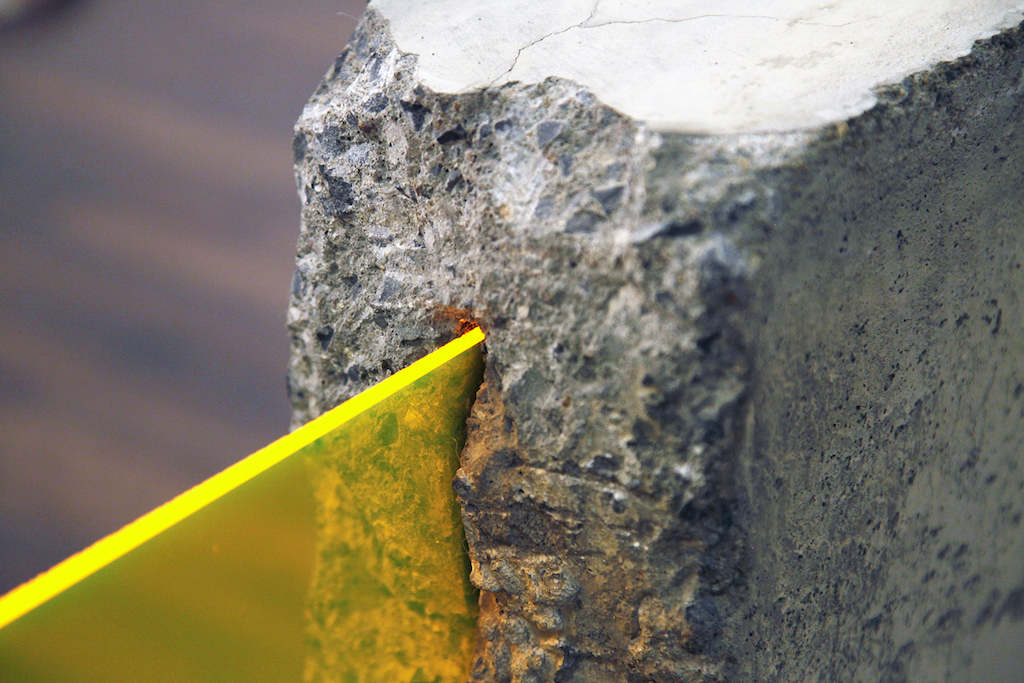



S4M4R3S | aenl | 2025 | media installation
S4M4R3S is a kinetic and performative installation by the duo aenl that explores the intersections between nature, technology, and spirituality. Suspended from the ceiling, a thermal printer activates once a day, at a random time, to drop a print: a BMP-stylized « helicopter » maple seed. This samara, printed on paper, spirals towards the ground. As the days go by, these prints accumulate into an increasingly dense column of paper, at once a waterfall, a stalactite, a trace of time.
The device creates a suspension of waiting: we cannot choose the moment of printing, we only witness the consequences of the automated act. The work escapes the spectacular to better reveal the poetry of passing time. Slow, cyclical, patient, the installation develops outside the usual framework.
Through S4M4R3S, a reflection is offered on our relationship with time, the imperceptible, and technological promise. The work engages in a dialogue between future and present, between the potential of a repeated gesture and its deferred material manifestation. The installation places the public face to face with our desire for interactivity, our thirst for immediacy, while evoking an ecology of the gaze and of time.
We acknowledge the Conseil des Arts et Lettres du Québec and Le Laboratoire (Toronto, ON) for their generous support of this project.



